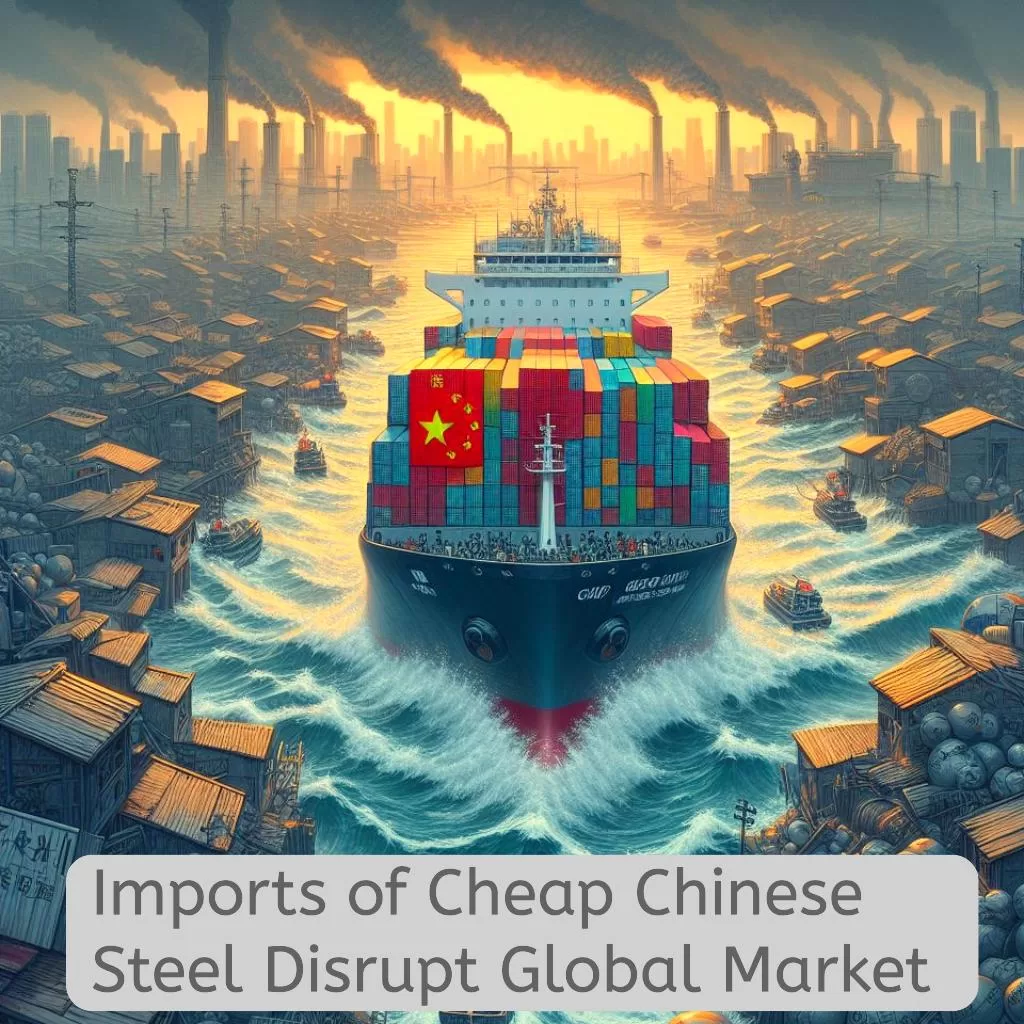The global steel industry faces tumultuous times as China, the world’s largest producer and consumer of steel, floods the market with its excess steel capacity. This article delves into the ramifications of China’s steel overproduction on global markets and explores potential strategies to address this challenge. Flood of Cheap Steel from China Disrupts Market.

Understanding the Situation: China’s steel industry, fueled by government subsidies and investment, has amassed immense production capacity. However, domestic demand has slowed, leading to a surplus of steel. To alleviate economic pressures and sustain growth, Chinese steel producers are exporting their excess output, causing ripples across global markets.
Impact on Global Markets: The influx of Chinese steel has disrupted global market dynamics, leading to oversupply, price volatility, and intensified competition. Steel producers in other countries struggle to compete with China’s low-cost exports, resulting in plant closures, job losses, and financial strain. Moreover, the dumping of cheap steel distorts trade flows and undermines fair competition, prompting concerns about market distortion and protectionism.
Challenges for Other Producers: Steel-producing nations outside China face an uphill battle in safeguarding their domestic industries. Efforts to impose tariffs or trade restrictions on Chinese steel imports risk retaliation and trade tensions. Additionally, reliance on imported steel undermines domestic production capabilities, jeopardizing national security and industrial resilience.
Multilateral Cooperation: Addressing the issue of Chinese steel overcapacity requires a coordinated global effort. Multilateral forums, such as the World Trade Organization (WTO), can facilitate dialogue and negotiations aimed at curbing unfair trade practices and promoting market-driven solutions.
- Market-Based Reforms in China: Encouraging China to implement market-oriented reforms in its steel sector is essential. This includes reducing subsidies, enforcing environmental regulations, and fostering domestic consumption to rebalance supply and demand within China’s borders.
- Investment in Innovation and Efficiency: Steel producers worldwide must invest in innovation and efficiency to enhance competitiveness. Embracing technological advancements, such as automation and sustainable practices, can reduce production costs and improve product quality, enabling them to withstand global competition.
- Diversification of Markets: Diversifying export markets can help mitigate the impact of Chinese steel dumping. Steel-producing countries should explore new trading partnerships and export destinations to reduce reliance on vulnerable markets susceptible to Chinese competition.
The flood of Chinese steel presents a formidable challenge to the global steel industry, threatening livelihoods and economic stability worldwide. Addressing this issue requires concerted efforts from governments, industry stakeholders, and international organizations. By promoting fair trade practices, fostering innovation, and diversifying markets, the global steel industry can navigate these turbulent waters and build a more resilient future.
Connect with Factoring Specialist, Chris Lehnes on LinkedIn
Read more articles about Global Commodity Prices
